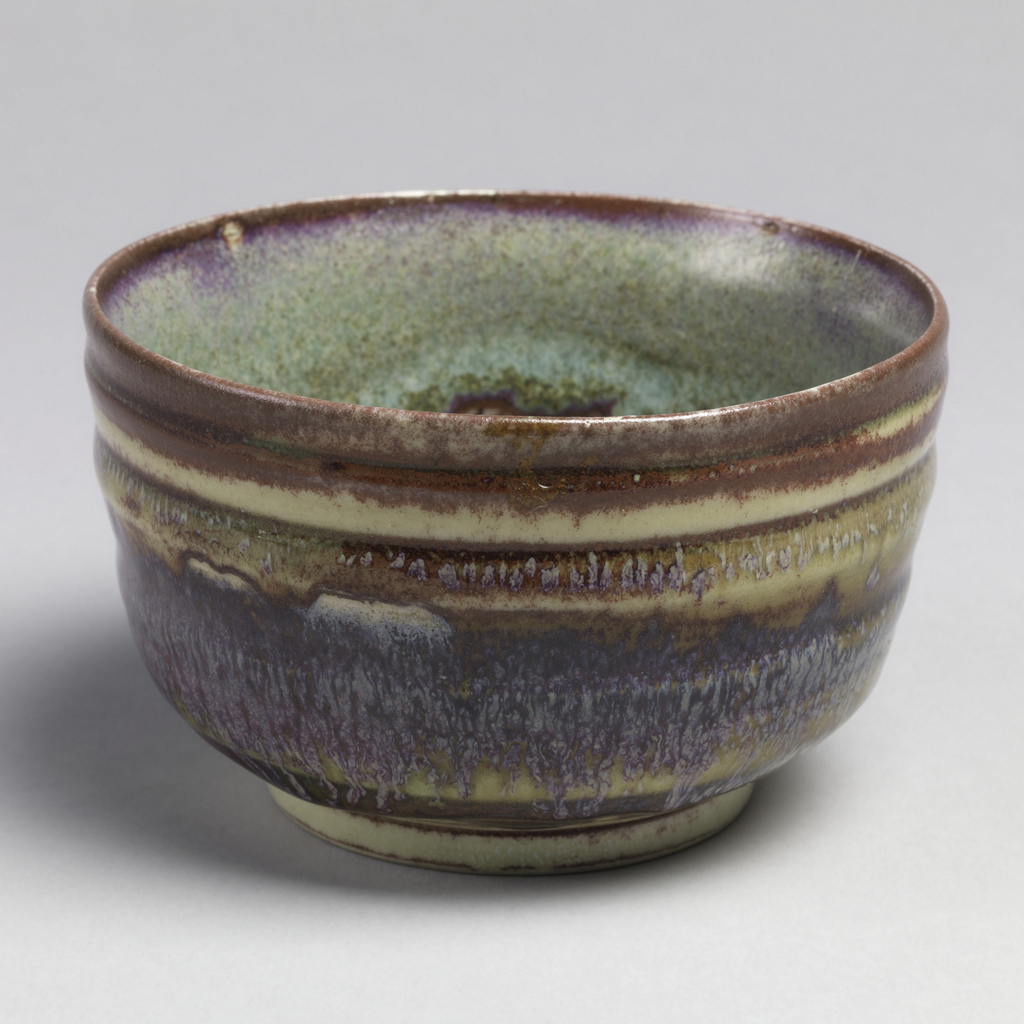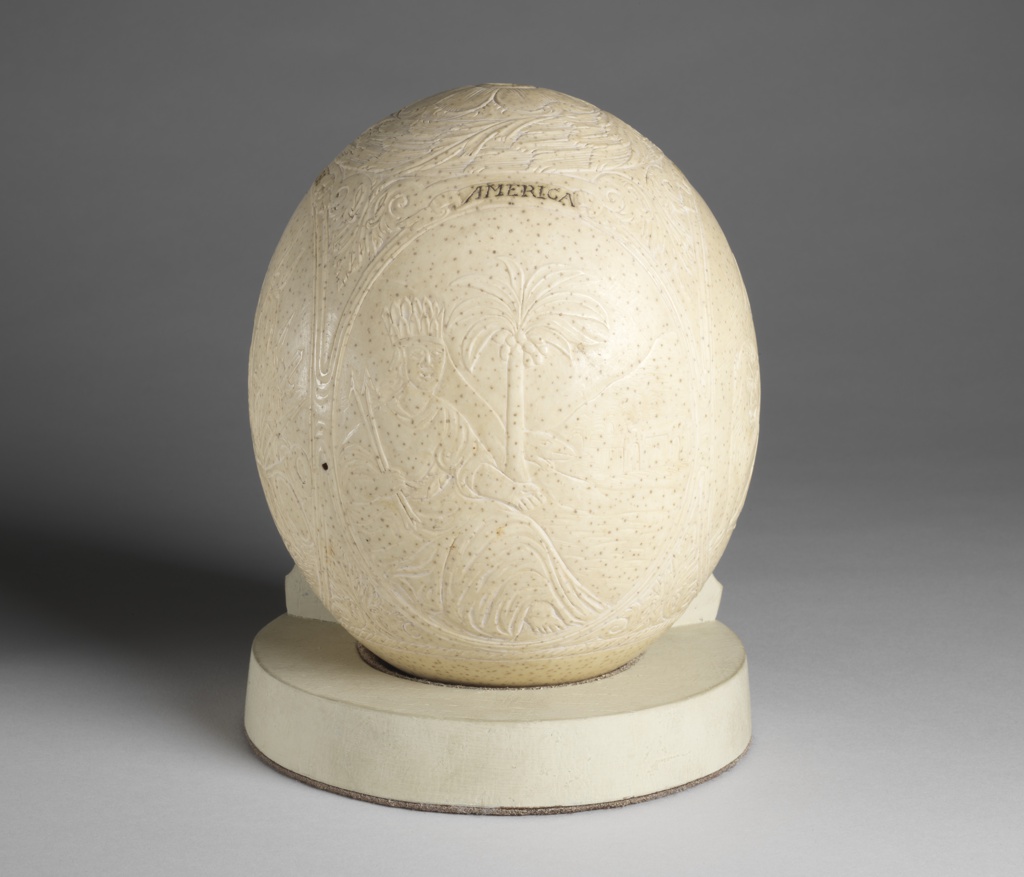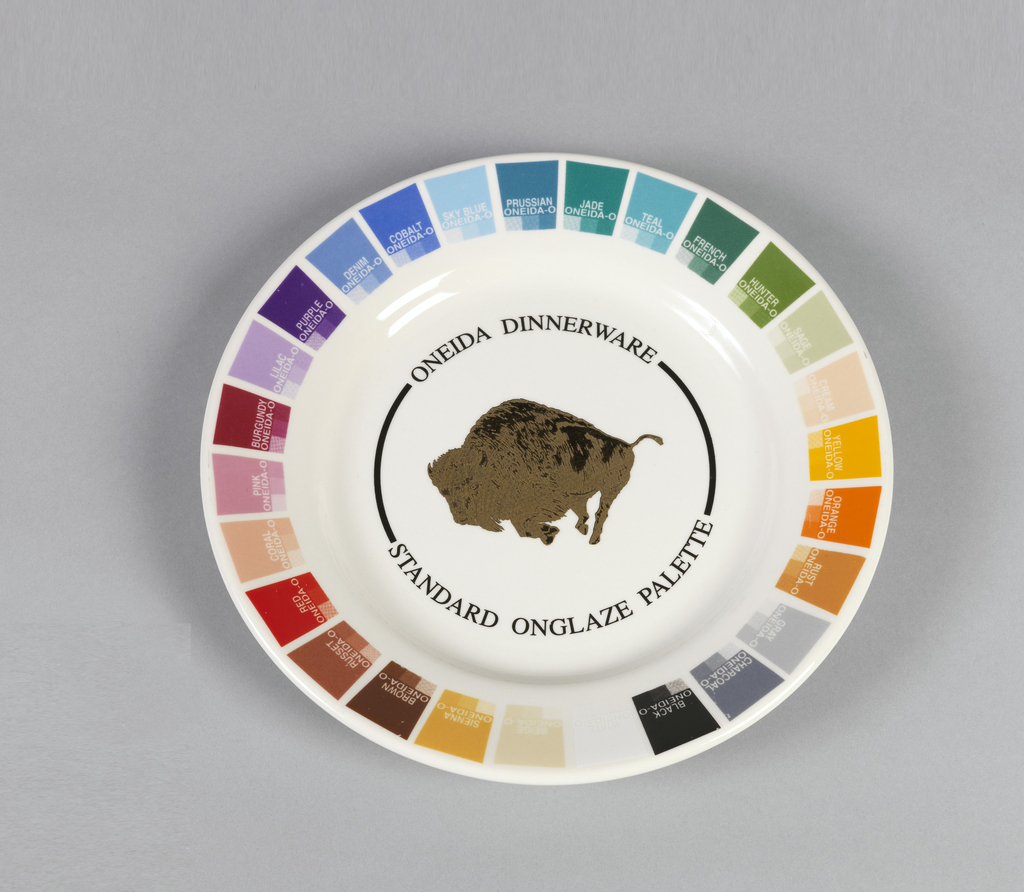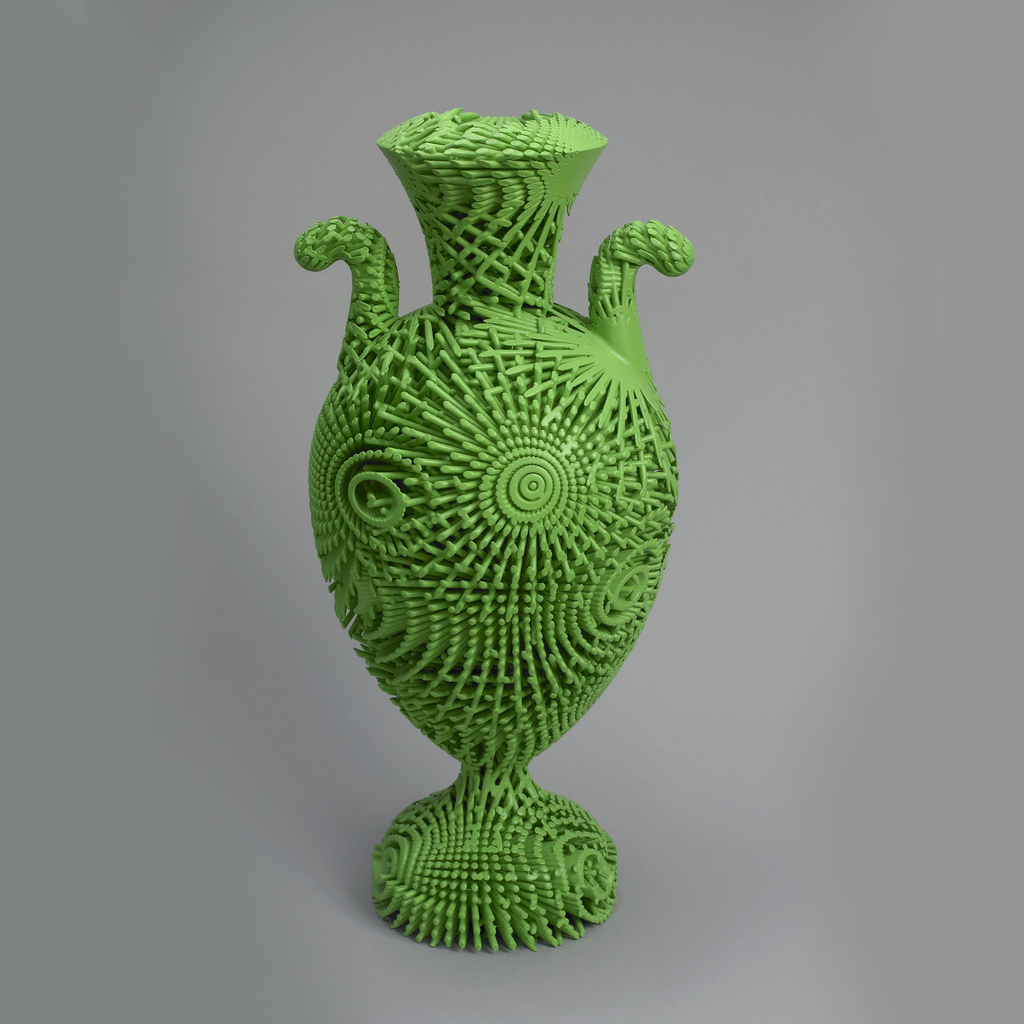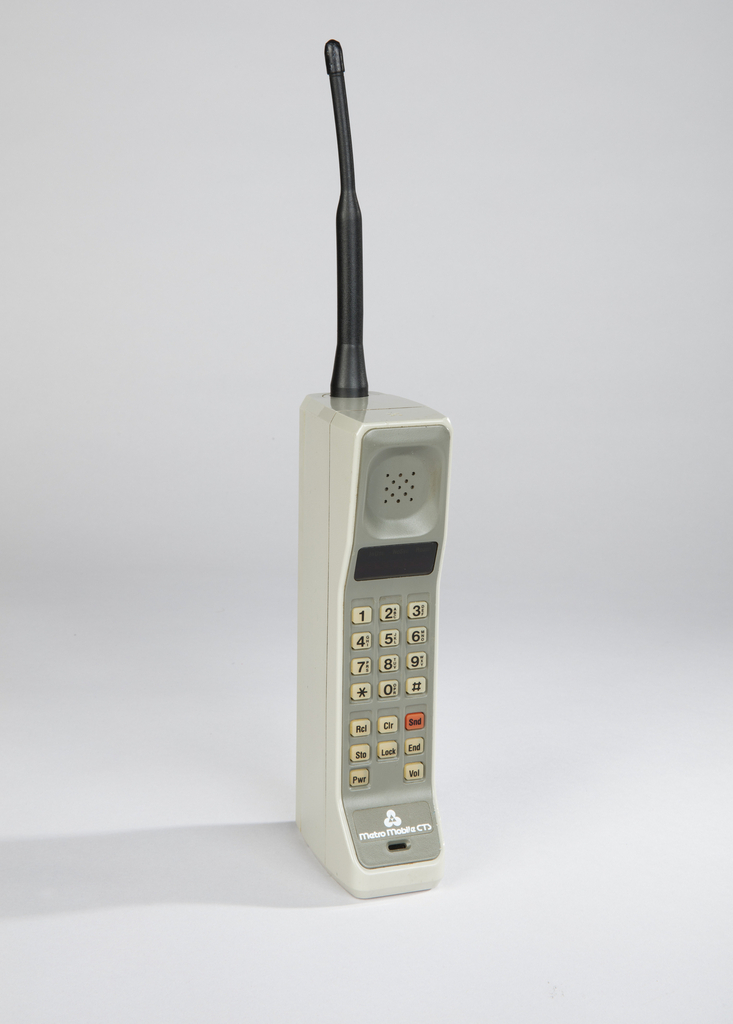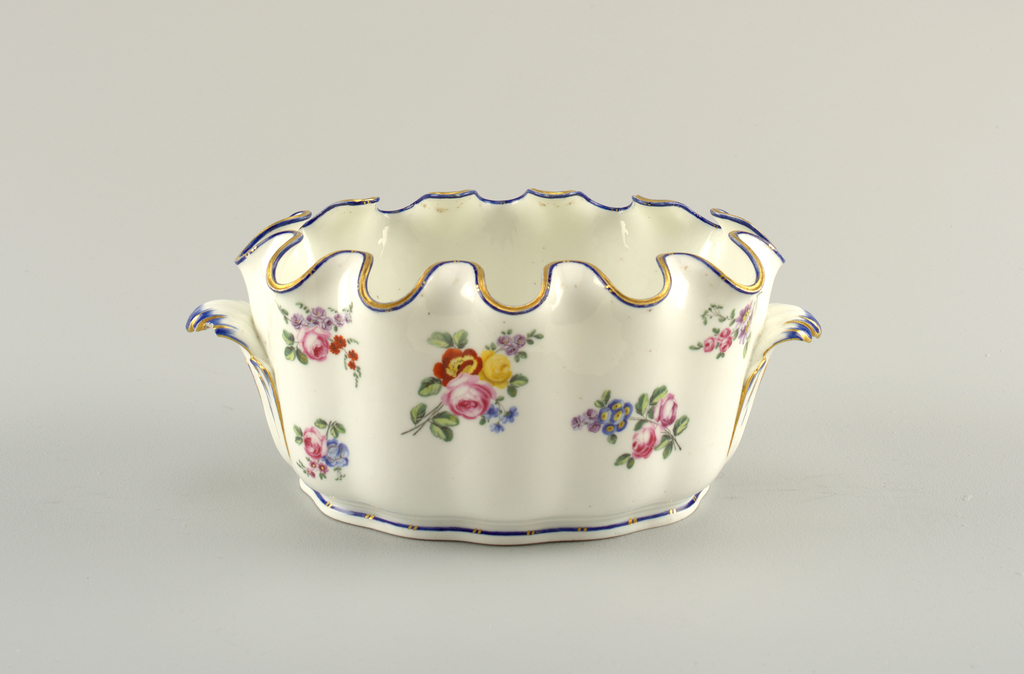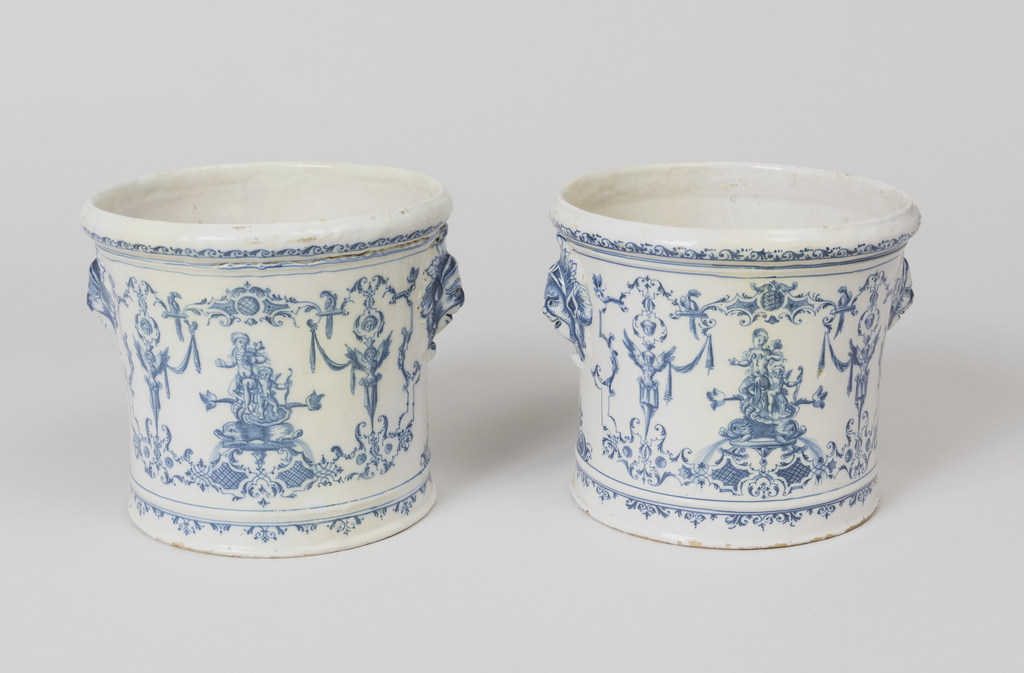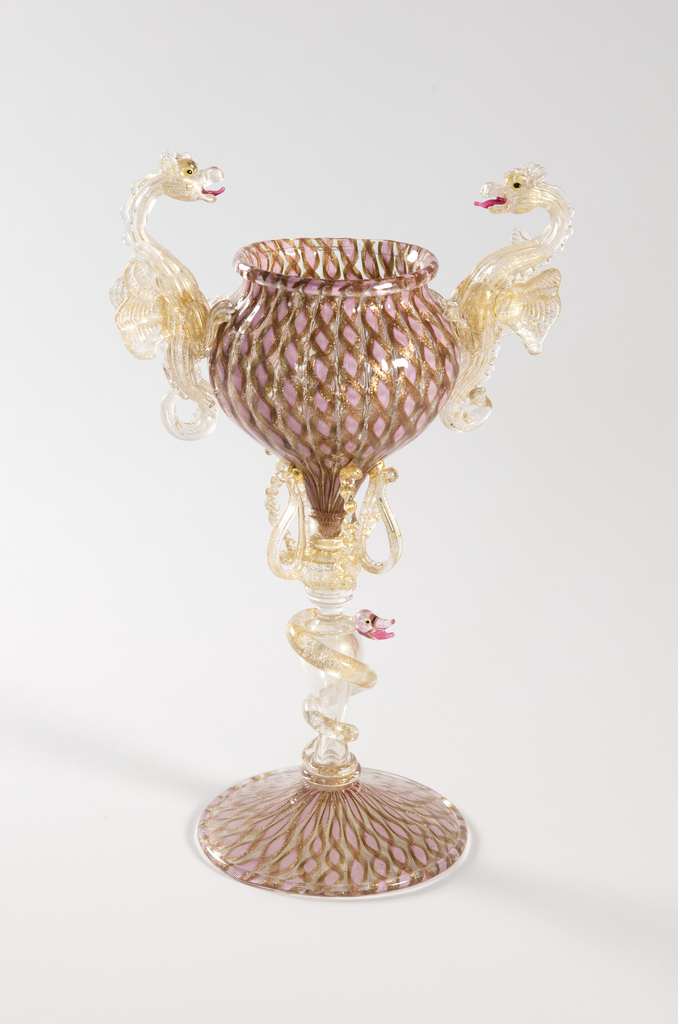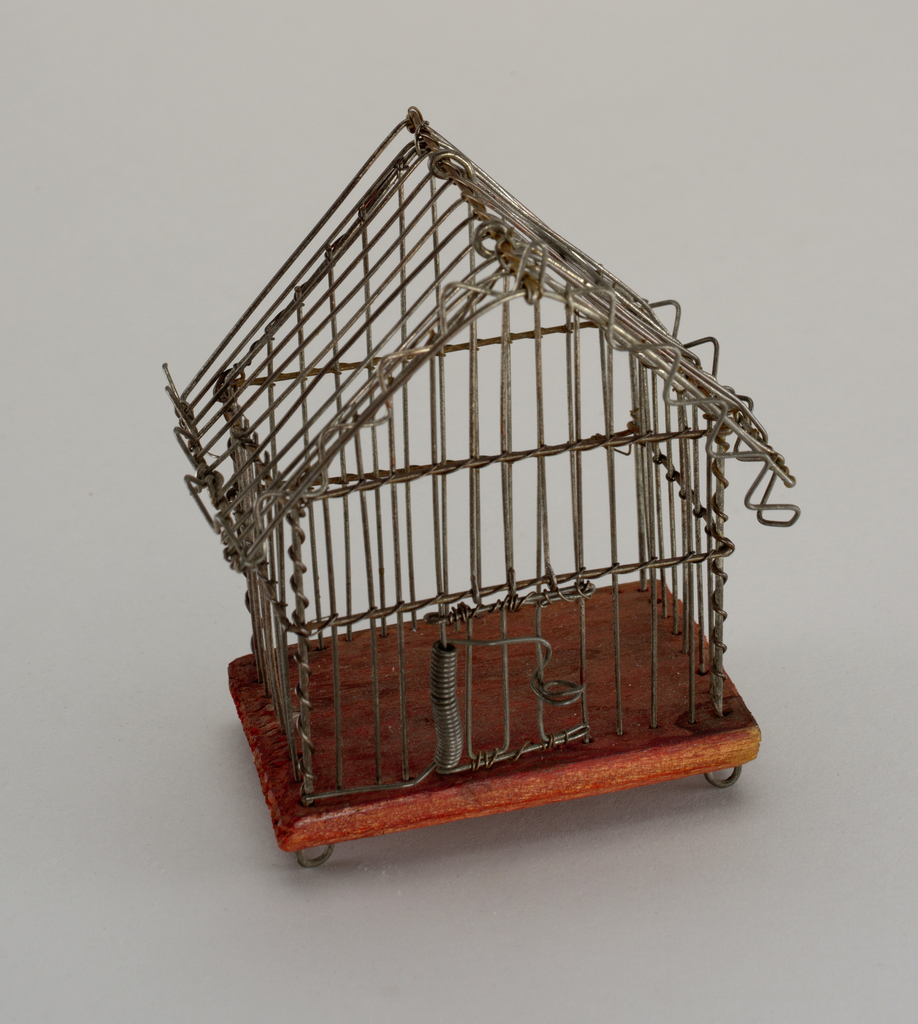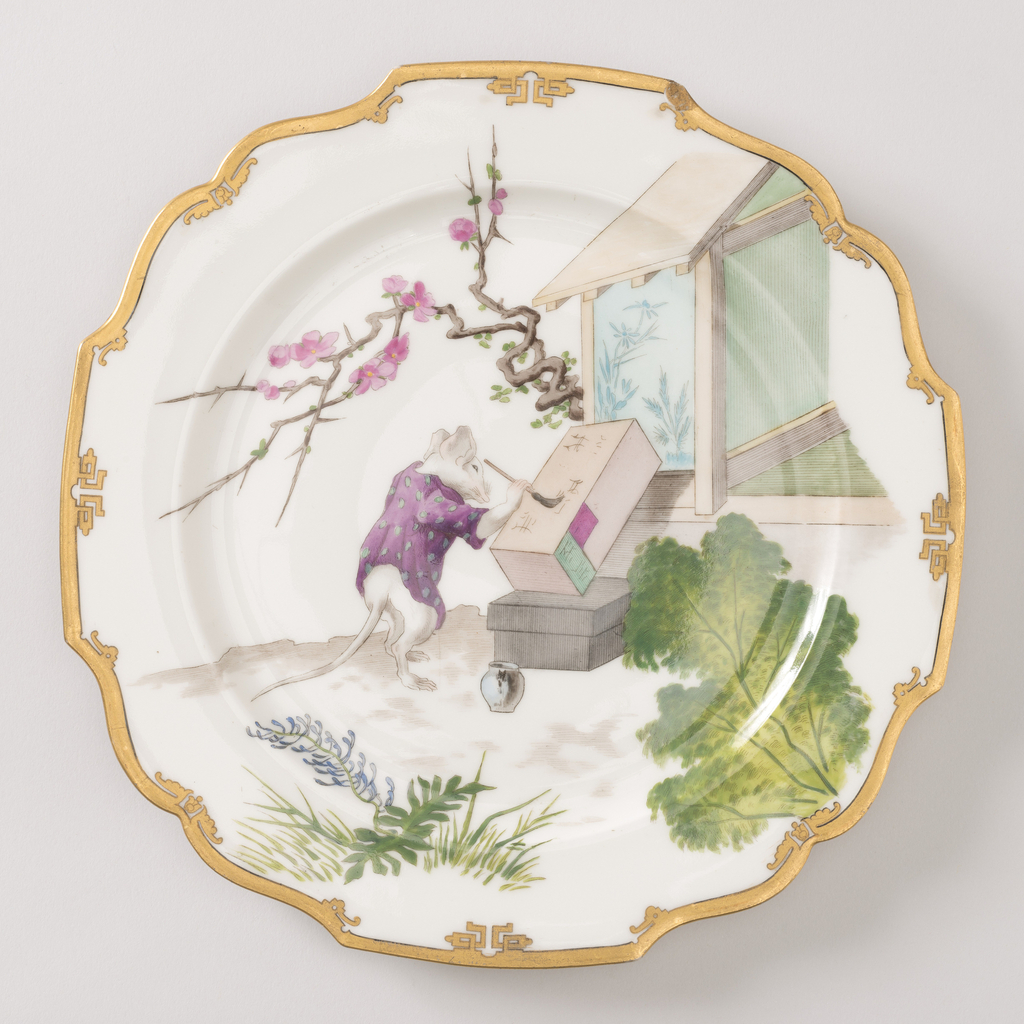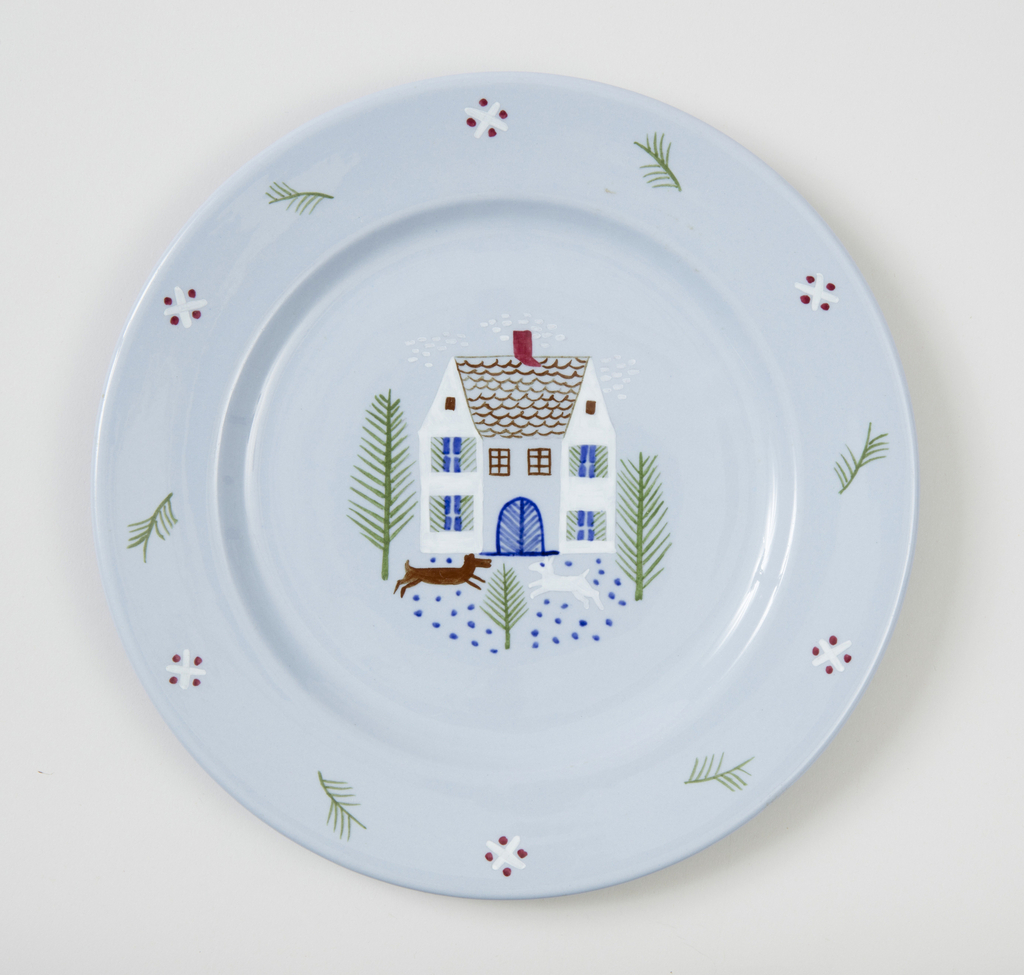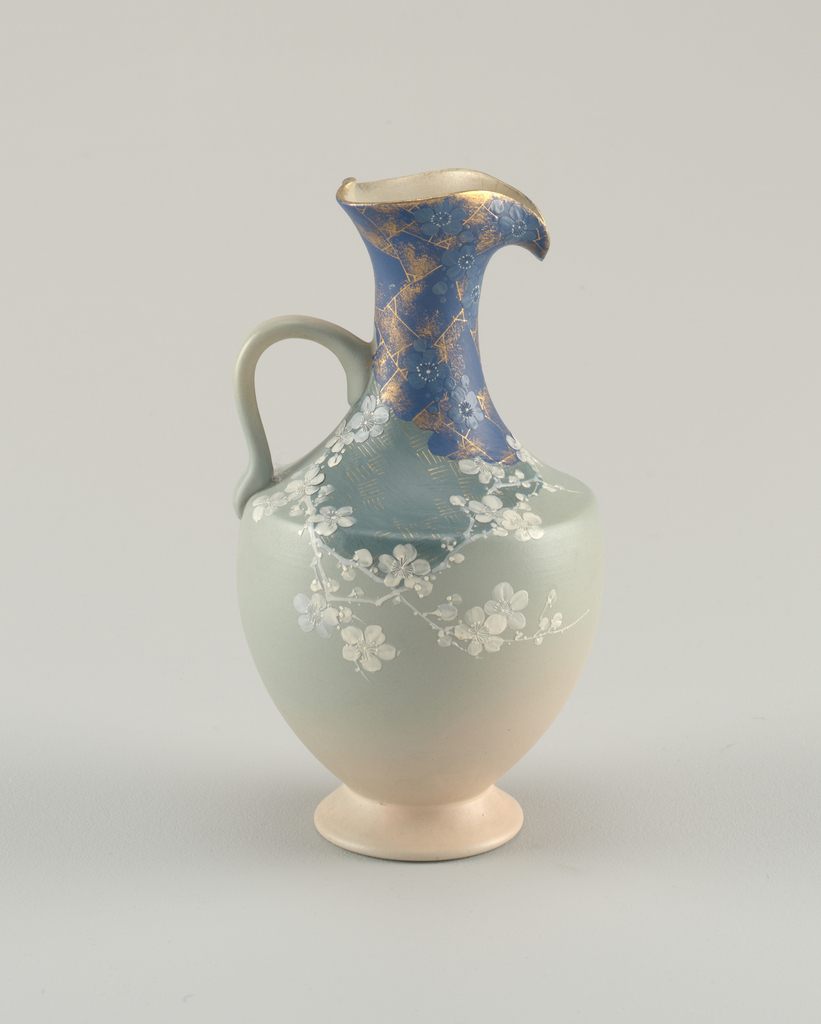In celebration of Women’s History Month, March Object of the Day posts highlight women designers in the collection. Louisa Etcheverry was born into a family of potters in California in 1911. Her uncle, Fred Meyer, was the founder of Meyer Pottery in Vernon, California, where her father worked and where Etcheverry herself started working in...
This ostrich egg is carved with allegorical figures representing the Four Continents—Europe, Asia, Africa, and America—a subject that originated in sixteenth-century drawings and prints and that later gained popularity in the decorative arts.[1] The collection of the late James Hazen Hyde, from which the ostrich egg comes, comprised hundreds of objects and prints depicting the...
Sample plates are produced by manufacturers of ceramic tableware as a means of demonstrating the colors with which items, usually in a particular product line, could be glazed. Sample plates provide insight into the colors—and, in some cases, decorative patterns—that were available and popular at particular moments in time. The Cooper Hewitt collection includes several...
To celebrate the opening of Saturated: The Allure and Science of Color (May 11, 2018-January 13, 2019), Object of the Day this month will feature colorful objects from the exhibition. For more than 20 years, Michael Eden has been a professional potter, often working in a traditional slipware technique. In 2006, he enrolled in a...
We’ve come so far technologically that cell phones are now in museums. And in a museum is likely the only place most people will have seen this model – the world’s first commercially available handheld cellular phone. When it came out, it weighed 2.5 pounds, required ten hours for charging for 35 minutes of talk...
You might think that this pitcher looks a bit like crushed ice, and perhaps the illusion is intended. This isn’t just any old pitcher, but a champagne pitcher, and it is special because of its so-called “bladder.” Within the body of the vessel, underneath the handle, is a cavity in which ice can be inserted,...
This verrière defines the classification of objects we call decorative arts: something that is both beautiful and functional. The function of the verrière is to cool wine glasses by inverting them and resting the feet and stems on the curved rim of the vessel, with the bowls immersed in cold water or ice. This type...
In the days before under-counter wine fridges, seaux à bouteilles, buckets made of earthenware or porcelain, were filled with ice water and used to keep bottles of wine cool. Their use continues to this day in the form of metal ice buckets used to keep white wine chilled table-side at fancy restaurants. When these objects were made,...
This extraordinary chalice takes its inspiration from dragon-stem goblets made by the legendary Venetian glassworkers in the seventeenth century. In this example, also made in Venice but in the late nineteenth century by Salviati & Company, the dragons have been elevated to the body of the cup. Several remarkable glassworking techniques are on display in this object....
According to the New Testament of the Bible, Jesus Christ ascended to Heaven from the Mount of Olives on the 40th day after Easter. Some Christians commemorate this as Ascension Day. In Italy, Ascension Day is celebrated by the exchange of crickets between friends. If, in the course of the day, the cricket chirps, its...
In 1814, the celebrated Japanese artist Katsushika Hokusai—best known his Thirty-Six Views of Mount Fuji, which included the imminently recognizable Great Wave off Kanagawa—published a 15-volume work titled Manga, containing thousands of illustrations of landscapes, plants and animals, people, decorative ornaments and more. In the mid-1870s, copies of the Manga circulated in France, and the...
Ilonka Karasz decorated this Buffalo China plate in about 1935, during the time that she worked as a designer for the company.[1] Founded by The Larkin Company, a soap factory, in 1901, Buffalo China produced soap dishes and other ceramics that were offered as premiums for purchasers of soap. The Larkin Company’s desirable premiums (including...
This pitcher was manufactured by Rookwood Pottery, an American art pottery company founded in Cincinnati, Ohio. Rookwood was begun by Maria Longworth Nichols in 1880 after she was enamored of the Japanese ceramics on view at the Centennial Exhibition in Philadelphia in 1876. Nichols originally proposed to her father that they bring a Japanese pottery—“workmen...
